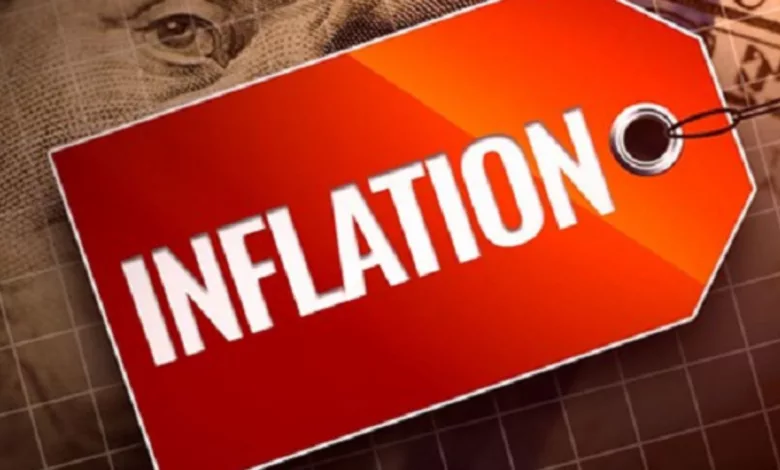-Inflation in India is expected to come down from 6.8% in the current fiscal year ending March 31 to 5% the next fiscal, and then drop further to 4% in 2024, IMF said.
-IMF said it is expecting some slowdown in the Indian economy next fiscal year and projected the growth to 6.1% from 6.8% during the current fiscal ending March 31
Washington, NFAPost: Inflation in India is expected to come down from 6.8% in the current fiscal year ending March 31 to 5% the next fiscal, and then drop further to 4% in 2024, the International Monetary Fund (IMF) said.
Inflation in India as in other countries is expected to come down from 6.8% in 2022 to 5% in 2023 and then 4% coming towards the target in 2024, Daniel Leigh, Division Chief, Research Department of the IMF told reporters here.
That partly reflects the central bank’s actions, he added,
According to the World Economic Outlook update released by the IMF on Tuesday, about 84% of countries are expected to have lower headline (consumer price index) inflation in 2023 than in 2022.
Global inflation is set to fall from 8.8% in 2022 (annual average) to 6.6% in 2023 and 4.3% in 2024 — above pre-pandemic (201719) levels of about 3.5%, it said.
The projected disinflation partly reflects declining international fuel and non-fuel commodity prices due to weaker global demand. It also reflects the cooling effects of monetary policy tightening on underlying (core) inflation, which globally is expected to decline from 6.9% in the fourth quarter of 2022 (year over year) to 4.5% by the fourth quarter of 2023, the IMF said.
Still, disinflation will take time: by 2024, projected annual average headline and core inflation will, respectively, still be above pre-pandemic levels in 82% and 86% of economies, it said.
In advanced economies, annual average inflation is projected to decline from 7.3% in 2022 to 4.6% in 2023 and 2.6% in 2024 — above target in several cases. In emerging markets and developing economies, projected annual inflation declines from 9.9% in 2022 to 8.1% in 2023 and 5.5% in 2024, above the 4.9% pre-pandemic (201719) average, the IMF said.
In low-income developing countries, inflation is projected to moderate from 14.2% in 2022 to 8.6% in 2024 — still high, but close to the pre-pandemic average, it further said.
In a blog post, Pierre-Olivier Gourinchas, Chief Economist and Director, Research Department of the IMF, wrote that global inflation is expected to decline this year but even by 2024, projected average annual headline and core inflation will still be above pre-pandemic levels in more than 80% of countries.
The inflation news is encouraging, but the battle is far from won. Monetary policy has started to bite, with a slowdown in new home construction in many countries. Yet, inflation-adjusted interest rates remain low or even negative in the euro area and other economies, and there is significant uncertainty about both the speed and effectiveness of monetary tightening in many countries, Gourinchas said.
Expecting slowdown in Indian economy to 6.1% in 2023 from 6.8% in 2022: IMF
The International Monetary Fund (IMF) on Tuesday said it is expecting some slowdown in the Indian economy next fiscal year and projected the growth to 6.1% from 6.8% during the current fiscal ending March 31.
The IMF on Tuesday released the January update of its World Economic Outlook, according to which the global growth is projected to fall from an estimated 3.4% in 2022 to 2.9% in 2023, then rise to 3.1% in 2024.
Our growth projections actually for India are unchanged from our October Outlook. We have 6.8% growth for this current fiscal year, which runs until March, and then we’re expecting some slowdown to 6.1 in fiscal year 2023. And that is largely driven by external factors, Pierre-Olivier Gourinchas, Chief Economist and Director, Research Department of the IMF told reporters here.
Growth in India is set to decline from 6.8% in 2022 to 6.1% in 2023 before picking up to 6.8% in 2024, with resilient domestic demand despite external headwinds, said the IMF’s World Economic Outlook update.
According to the report, growth in emerging and developing Asia is expected to rise in 2023 and 2024 to 5.3% and 5.2%, respectively, after the deeper-than-expected slowdown in 2022 to 4.3% attributable to China’s economy.
China’s real GDP slowdown in the fourth quarter of 2022 implies a 0.2 percentage point downgrade for 2022 growth to 3.0 percen — the first time in more than 40 years with China’s growth below the global average. Growth in China is projected to rise to 5.2 percent in 2023, reflecting rapidly improving mobility, and to fall to 4.5 percent in 2024 before settling at below 4 percent over the medium term amid declining business dynamism and slow progress on structural reforms.
Overall, I want to point out that emerging market economies on the whole and developing economies seem to be already on their way up. We have a slight increase in growth for the region from 3.9 percent in 2022 to 4 percent in 2023, Gourinchas said.
Another relevant point here is that if we look at both China and India together, they account for about 50 percent of world growth in 2023. So a very significant contribution, he said.
I want to say, we had a positive view on India in our October forecast. That positive view is largely unchanged, Gourinchas said in response to a question.
In a blog post he wrote that India remains a bright spot. Together with China, it will account for half of global growth this year, versus just a 10th for the US and euro area combined, he added.
For advanced economies, the slowdown will be more pronounced, with a decline from 2.7 percent last year to 1.2 percent and 1.4 percent this year and next. Nine out of 10 advanced economies will likely decelerate, Gourinchas said.
The US’ growth will slow to 1.4 percent in 2023 as Federal Reserve interest-rate hikes work their way through the economy. Euro area conditions are more challenging despite signs of resilience to the energy crisis, a mild winter, and generous fiscal support, he said.
With the European Central Bank tightening monetary policy, and a negative terms-of-trade shock due to the increase in the price of its imported energy we expect growth to bottom out at 0.7 percent this year, Gourinchas wrote.





